Predictive analytics pricing models reshape how businesses make vital pricing decisions. These sophisticated models can substantially improve profit margins through inventory forecasting, dynamic pricing strategies, and accurate customer prediction.
The powerful combination of data mining, statistics, artificial intelligence, and machine learning allows predictive pricing analytics to interpret historical data and make accurate future predictions. Businesses can analyze complex relationships between product attributes and sales with advanced techniques like regression analysis and neural networks. The system handles big data efficiently and adjusts prices based on market dynamics up-to-the-minute.
This piece explores predictive data analytics models’ role in price forecasting. You’ll learn about these models’ core components and data preparation techniques. The guide reveals proven strategies to build and optimize your pricing models. The information will give you practical guidance to implement informed pricing decisions, whether you’re new to predictive analytics or want to boost your existing pricing strategies.
Understanding Predictive Analytics Models for Price Forecasting
Understanding how predictive analytics models process and analyze data creates the foundation for price forecasting that works. These advanced models blend statistical analysis with machine learning algorithms. They spot patterns and predict future price movements with remarkable accuracy.
Core components of predictive pricing models
Three basic components work together in predictive pricing models to create accurate forecasts. The data collection and preprocessing component pulls in historical sales data, market conditions, and external variables. The analytical engine then uses statistical methods and machine learning algorithms to process this information. The output component turns these analyzed patterns into useful pricing recommendations.
Types of data required for accurate forecasting
Price forecasting needs two main types of data to succeed. Internal variables, which we call endogenous data, include product information, price history, and sales team data. External variables, or exogenous data, include market conditions, competitor pricing, and seasonal factors. A Gartner survey shows that poor quality of processed data negatively affects business operations in 70% of companies.
Model selection criteria and considerations
Several key factors determine the right predictive analytics model for your needs. Your model’s complexity should match your data’s quality and quantity. The selection process must also fit your specific pricing goals and market nature. Companies that use machine learning consistently perform better than their competitors who don’t use this technology.
Data quality and availability strongly determine how well your chosen model performs. Organizations need reliable data management practices and regular model updates to stay accurate. The selected model should adapt to changing market conditions while delivering consistent results.
Data Preparation and Processing Techniques
No source text provided to rewrite.
Building Advanced Predictive Pricing Models
Modern predictive analytics pricing models make use of advanced computational techniques that forecast future price movements with remarkable accuracy. These approaches combine multiple modeling strategies to understand complex market dynamics and price patterns.
Regression and time-series modeling approaches
Time series analysis serves as the foundation of price forecasting, especially when you have ARIMA (Autoregressive Integrated Moving Average) models. These models excel at capturing temporal dependencies in price data and show superior performance in markets with high price volatility. ARIMA models analyze historical patterns to identify seasonality, trends, and cyclical components. The model then uses these patterns to generate future price predictions.
Machine learning algorithms for price prediction
Advanced machine learning algorithms have changed price forecasting through their power to process big amounts of data and identify complex patterns. Long Short-Term Memory (LSTM) networks have become effective tools for price prediction. We used their power to capture long-term dependencies in time series data. These networks process multiple input features at once and consider various market factors when making predictions.
The following key algorithms have produced exceptional results in price forecasting:
- XGBoost (Extreme Gradient Boosting): Works best for handling non-linear price relationships
- Random Forests: Excels at capturing market volatility patterns
- Neural Networks: Identifies complex price patterns better
Hybrid modeling strategies
Hybrid models represent innovative technology in predictive pricing analytics by combining multiple forecasting approaches. These models merge traditional statistical methods with machine learning algorithms to utilize their complementary strengths. To name just one example, combining LSTM networks with ARIMA models has reduced forecasting errors by up to 28% compared to single-model approaches.
Hybrid models work through these steps:
- Processing historical price data through multiple algorithms simultaneously
- Weighing the predictions based on each model’s historical accuracy
- Combining the weighted predictions to generate final forecasts
Hybrid models’ success comes from their power to capture both linear and non-linear relationships in price data. These models have also shown remarkable adaptability to changing market conditions, making them valuable for dynamic pricing strategies.
What a world of advanced pricing analytics awaits! Subscribe to our newsletter for regular insights on implementing innovative predictive models.
Model Evaluation and Optimization
Testing and continuous refinement help us review the effectiveness of predictive analytics pricing models. A systematic approach to model assessment will give accurate and reliable pricing predictions over time.
Key performance metrics for price forecasting
The right performance metrics play a vital role in assessing model accuracy. The Mean Absolute Percentage Error (MAPE) is a primary metric that evaluates forecast accuracy at different scales. Notwithstanding that, MAPE struggles with zero or near-zero values, which led to the development of Mean Absolute Scaled Error (MASE) as a more reliable alternative.
Key metrics for evaluating price forecasting models include:
- Root Mean Square Error (RMSE): Measures prediction accuracy by penalizing larger errors more heavily
- Mean Absolute Error (MAE): Provides a straightforward measure of forecast accuracy in absolute terms
- Weighted Absolute Percentage Error (WAPE): Works best with low-volume data scenarios
Model validation techniques
Model reliability depends on proper validation techniques. Cross-validation serves as a fundamental approach where we divide data into training and validation sets. Research shows that using 60-80% of data for training and the remaining 20-40% for validation produces optimal results.
Both internal and external validation methods should be part of the process. Internal validation looks at the model’s performance within the existing dataset. External validation tests the model’s effectiveness on new data. This combined approach helps spot potential overfitting issues and ensures consistent performance across scenarios.
Continuous model improvement strategies
Model accuracy needs ongoing optimization efforts. You can minimize validity shrinkage by increasing sample size and reducing predictor numbers. The model’s long-term performance improves when you add domain expertise and theoretical knowledge to its development.
Models that use up-to-the-minute data analysis adapt better to market changes. Regular monitoring and parameter adjustments maintain accuracy consistently. Automated monitoring systems and clear performance thresholds help maintain the model’s effectiveness.
Ready to Transform Your Pricing Strategy? Subscribe to our newsletter to get regular insights on implementing cutting-edge predictive models and stay ahead of market trends.
Future-Proofing Your Pricing Strategy
Predictive analytics pricing models are powerful tools that combine historical data analysis with advanced machine learning capabilities. This piece explores model components, data preparation techniques and forecasting approaches that lead to accurate pricing decisions.
Machine learning algorithms show impressive accuracy in price forecasting, especially when you have hybrid models that combine ARIMA with LSTM networks. These models excel at capturing both linear and non-linear relationships and adapt well to changing market conditions. The model’s performance and reliability remain strong through regular reviews using metrics like MAPE and RMSE.
Your success with predictive pricing analytics depends on quality data, the right model selection and ongoing optimization. Begin your path toward evidence-based pricing decisions today – download our pricing calculator to review potential improvements in your strategy.
The future of predictive analytics will be crucial as markets grow more complex and competitive. Keep up with trends and get regular updates about implementing state-of-the-art predictive models by subscribing to our newsletter.











